
Introduction
Crucial is a brand of Micron, and Micron is well known for quality memory components. Today we have a Crucial Ballistix Gaming Memory kit for the desktop PC for review. This is a great kit that has just the right specs and price for any modern gaming PC using DDR4.
The specific kit we are looking at today is the Crucial Ballistix 16GB Kit (2 x 8GB) DDR4-3600 Desktop Gaming Memory (Black) BL2K8G36C16U4B kit. This includes two 8GB sticks of DDR4-3600 PC4-28800 CL16 memory modules for a total of 16GB for $84.99 MSRP. In fact, right now as of this writing they are available for only $75.98 from Newegg, a great deal for fast RAM on any modern gaming system.
Under Crucial’s gaming-specific RAM, you will find its Ballistix branded desktop PC memory. At the high-end, for hardcore gamers and overclockers and enthusiasts, you will find its Ballistix MAX RAM modules, and then under that, you will find its Ballistix RAM modules that still have high performance, but are a bit toned down overall, and cheaper in price. The Ballistix modules still get Crucial’s custom heatsink spreader, and there are multiple colors available. It is of this category, that we are reviewing a kit from today. Though, we do have a Ballistix MAX kit to review next, so stay tuned.
Crucial offers several different speeds of RAM, from DDR4-2667 to DDR4-3000, to DDR4-3200, and finally DDR4-3600. Then, under these different speeds Crucial offers several different memory kits under the Ballistix branding, there are 2 x 8GB (16GB) kits, 2 x 16GB (32GB) kits and even 2 x 32GB (64GB) kits available. They come in black, white, or red with no RGB, or black, white, and red with RGB. This opens up a lot of RAM options available.
Crucial Ballistix DDR4-3600 16GB RAM Kit
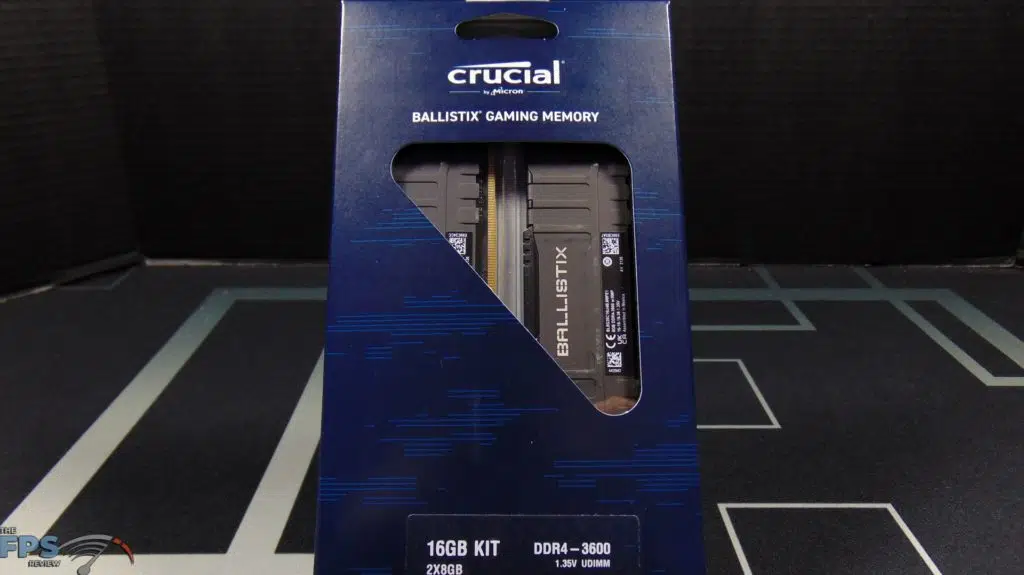

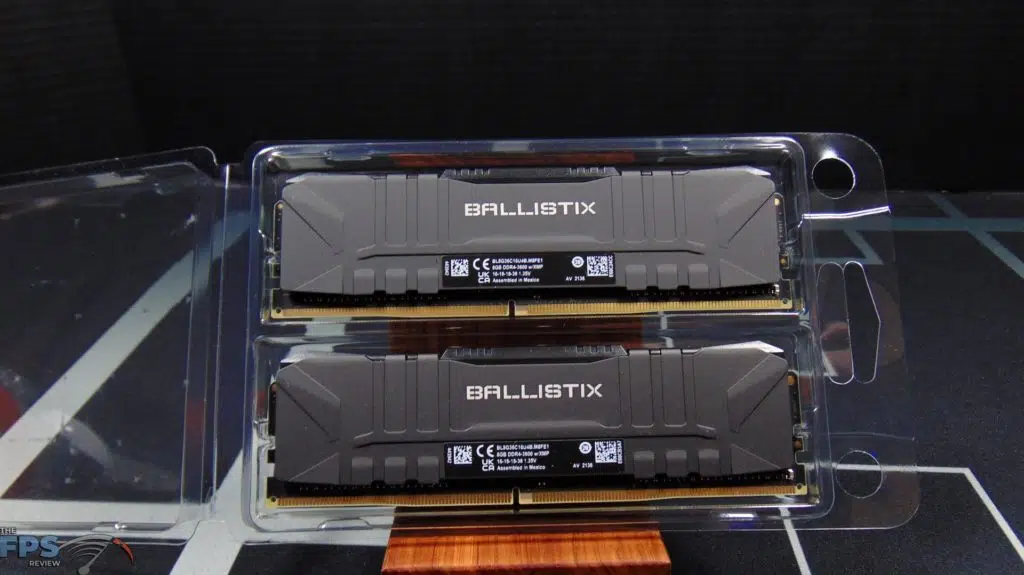
Inside the package are two 8GB modules of DDR4-3600 CL16 (CAS Latency 16) memory modules. They operate at 3600MT/s (Mega-Transfers per second) in dual-channel together making 16GB total. The individual DRAM modules are labeled BL8G36C16U4B.M8FE1 8GB DDR4-3600 w/XMP. They do support XMP profiles and AMD DOCP. The timings are 16-18-18-38 CR 1T at 1.35V. That is the DOCP profile when you enable it. These are unbuffered non-ECC UDIMMs.

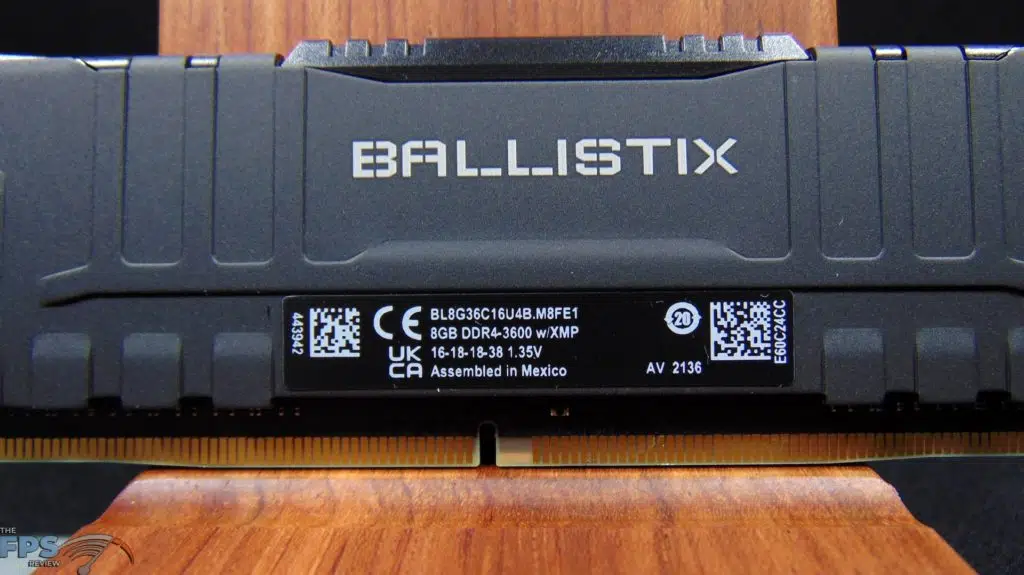

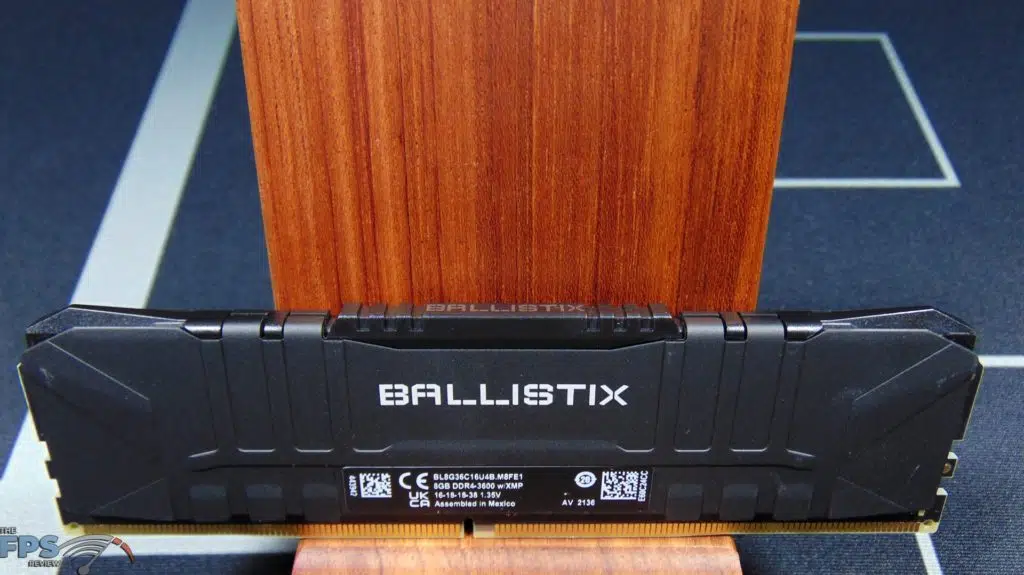
The modules have a custom Crucial heat spreader that covers both sides. It feels very robust in the hand and very solid and well put together. There are extra surface bumps and top areas that help dissipate heat. The PCB itself is black in color, which matches the black aluminum heat spreader. The heat spreader has a coarse feel to it, almost like rubber, it is not smooth or slippery metal, it’s a very nice texture and feels robust. We have the black color version, but you can also get versions with a red or white heat spreader. Ours does not have RGB, but there are RGB versions available.

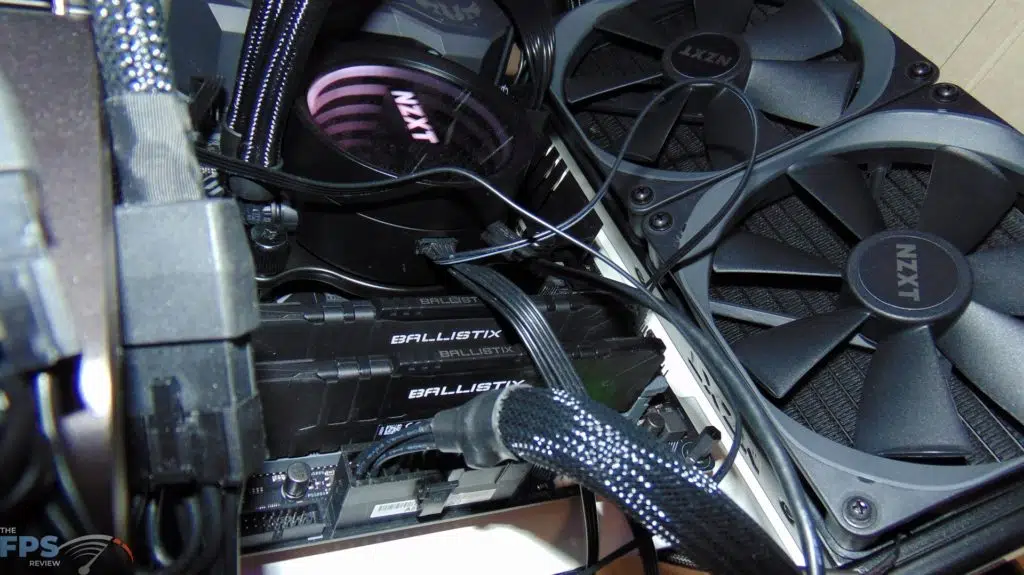
These modules are small enough in height that they do not interfere with air cooler or AIO cooler installations. The modules are 1.5″ in height. If you have an AIO radiator at the top of your case, for example, these do not stick out very far, so it is easier to fit large radiators at the top, or if you have a tight case, these are not big. There are also no real sharp edges on it, reducing the chance of slicing your finger or a cable. Crucial offers a limited lifetime warranty on the memory. You can read more about that here.
Default Installation

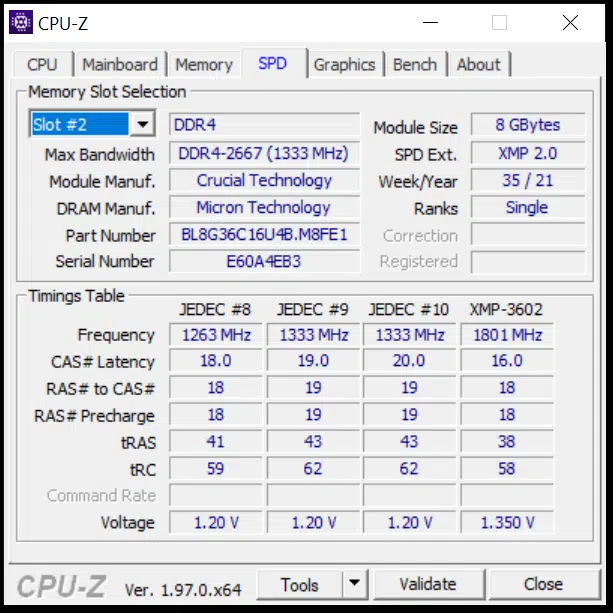
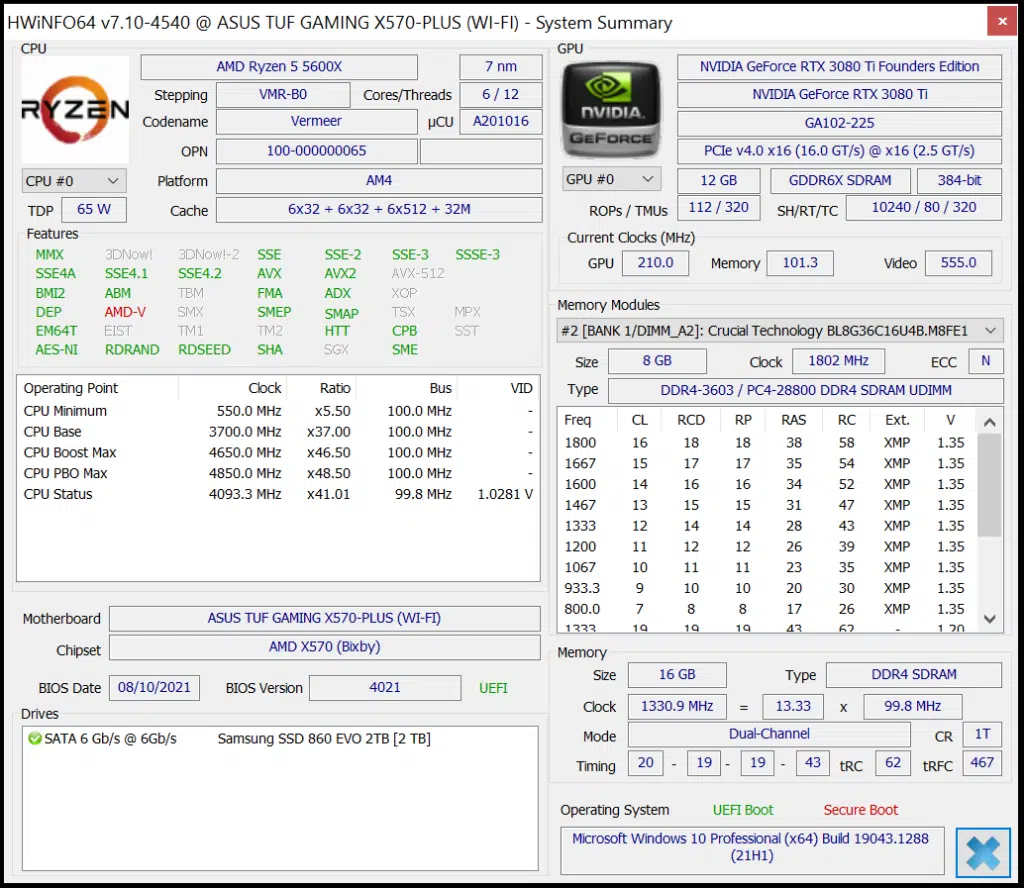
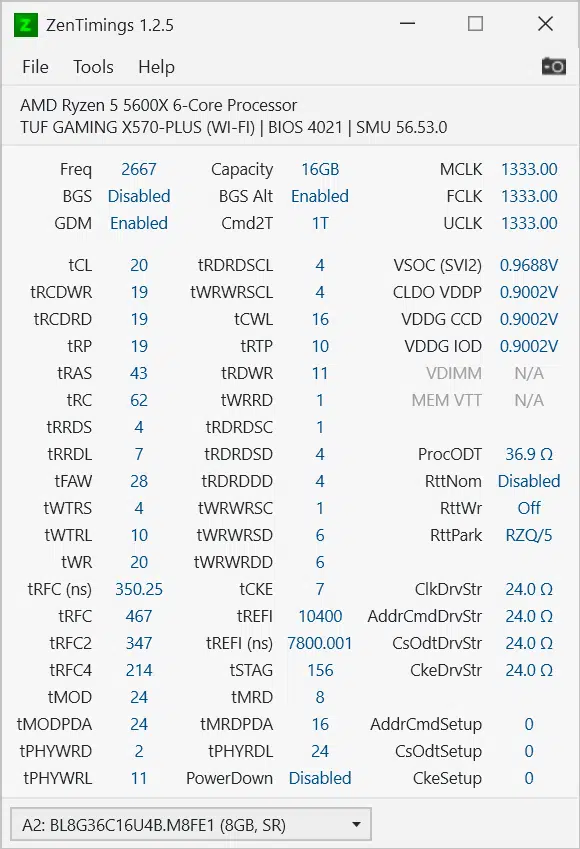
We are installing our RAM into an ASUS TUF GAMING X570-Plus Wi-Fi motherboard with a Ryzen 5 5600X CPU. We found no compatibility issues running this RAM, or overclocking it on this system.
When you install the RAM and leave the motherboard BIOS on its default “Auto” setting for RAM, it will run this RAM at the JDEC speed of DDR4-2667. You can see in the CPUz, HWiNFO64, and AIDA64 information above the specifications of the RAM at default, on Auto. The DRAM frequency is 1333MHz, FCLK is 1333MHz and UCLK is 1333MHz. The CAS Latency on Auto is a high 20-19-19-43 CR 1T and 1.2V.
D.O.C.P. DDR4-3600

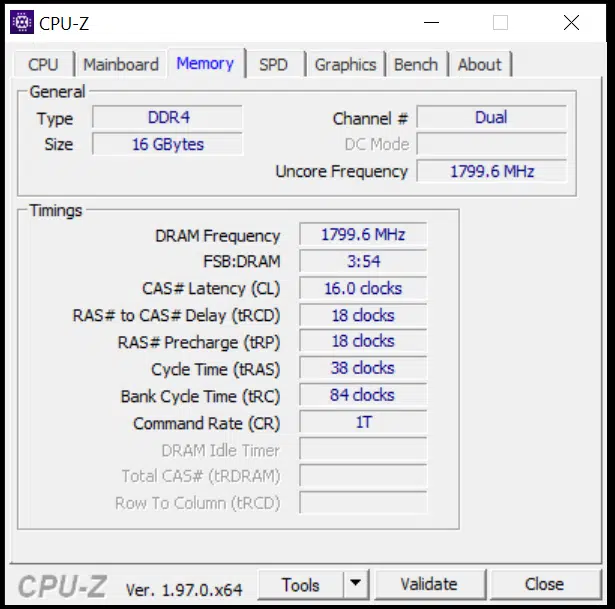
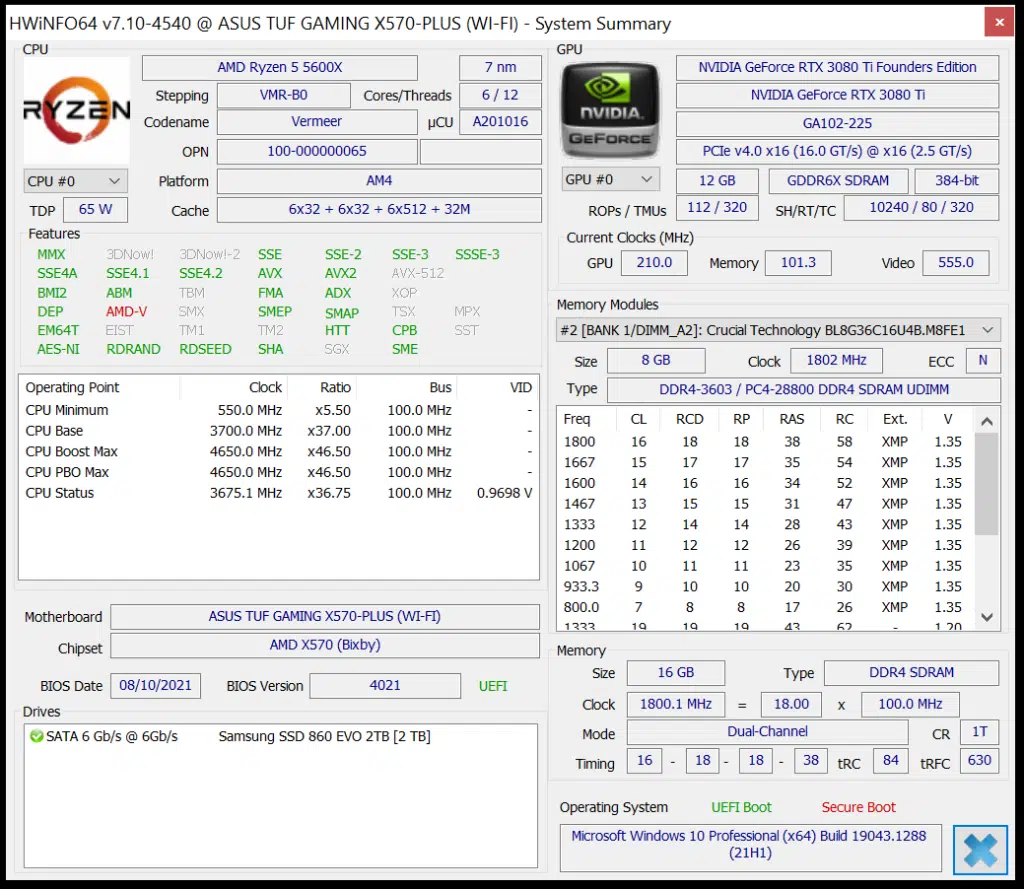
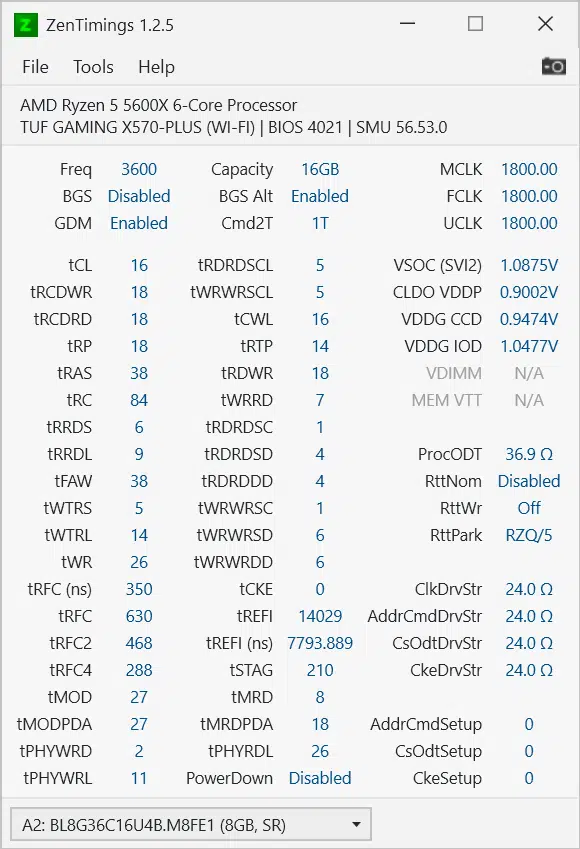
To get the most out of this RAM you must run it at its rated XMP or D.O.C.P. profile in the BIOS. This memory has XMP 2.0 support and AMD D.O.C.P. (DRAM Overclocking Profile.) As you can see in the BIOS it supports D.O.C.P DDR4-3600 16-18-18-38 at 1.35V which is what this memory is rated for. According to ZenTimings it is running at 1800MHz and the FCLK Frequency is running 1800MHz and UCLK is at 1800MHz as well. The timings are 16-18-18-18-38 with a Command Rate of 1T at 1.35V.
Overclocking
In our methodology for testing overclocking on RAM, our goal is to raise the frequency as high as possible with the RAM in its fastest XMP or D.O.C.P. profile timings and voltage. We want to see how high the RAM can overclock maintaining its rated voltage and the same XMP/D.O.C.P. timings that the RAM is rated at. We push the DRAM frequency and FCLK Frequency up maintaining a 1:1 ratio so as to not bottleneck the AMD Infinity Fabric and introduce latency with the RAM at the rated voltage, and timings of XMP/D.O.C.P.

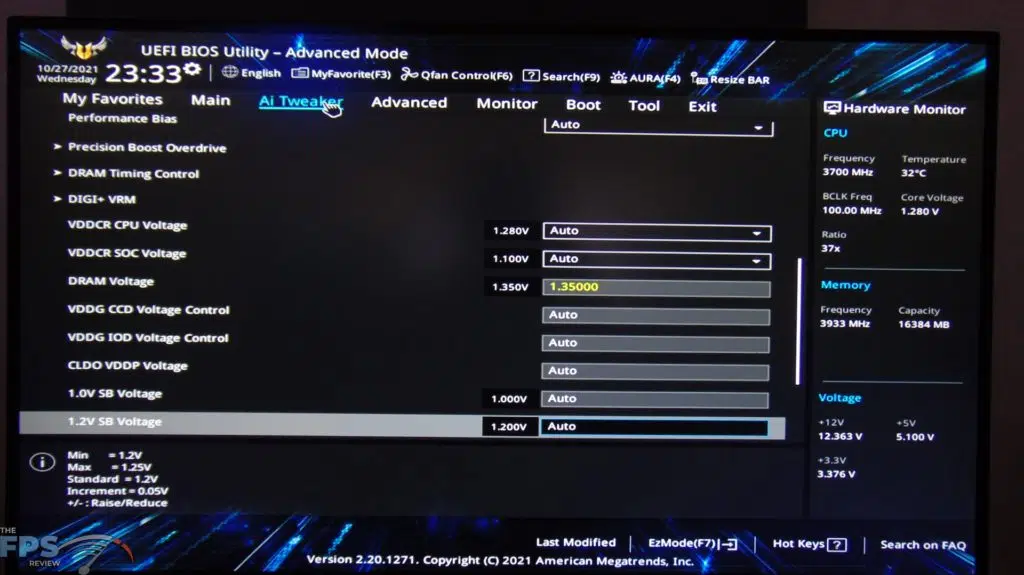
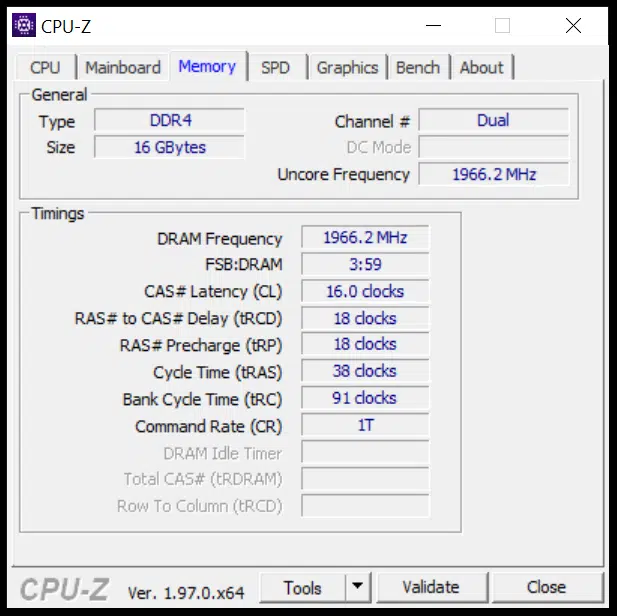
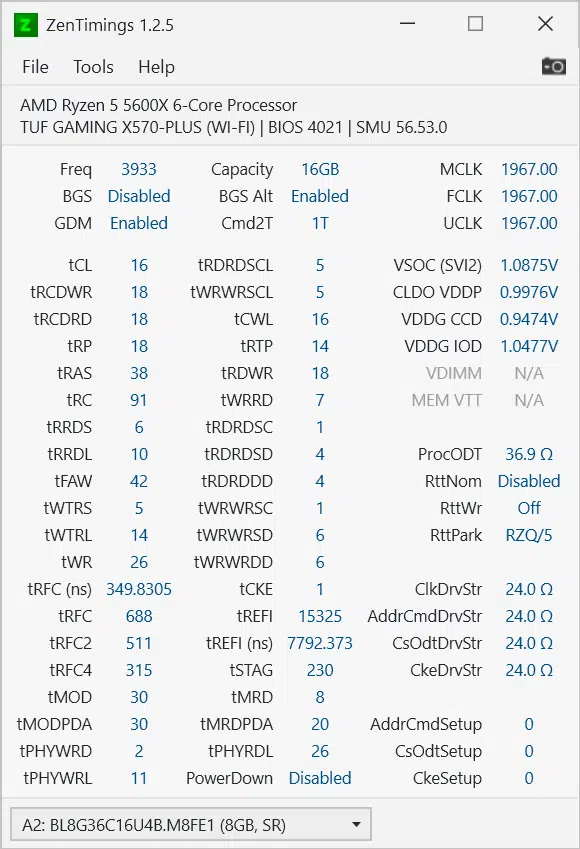

Above you can see our BIOS settings for what we found the highest stable overclock to be on this memory maintaining a 1.35 Voltage and timings of 16-18-18-18-38 CR 1T. Our RAM was able to hit 3933MHz versus 3600MHz, maintaining the same Voltage and timings. We bumped the FCLK Frequency up to 1966MHz to keep the DRAM and FCLK Frequency on a 1:1 ratio to maintain the highest performance advantage.
In ZenTimings you can see that the DRAM frequency is exactly 1967MHz and FCLK and UCLK are also 1967MHz. The timings remain at 16-18-18-18-38 CR 1T. In TestMem5 you can see that these settings completely passed the memory test with no errors.
We also tried bumping the RAM up to DDR4-4000, however, we got errors in TestMem5, even though the system did boot fine. It is possible DDR4-4000 would be stable with a Voltage boost beyond 1.35V, perhaps up to 1.38V or even 1.4V, it should then work. This is, however, out of the range of what the RAM module is technically rated for. In our opinion, it isn’t worth the extra Voltage to push it that hard, especially if you need stability and confidence in your system.
